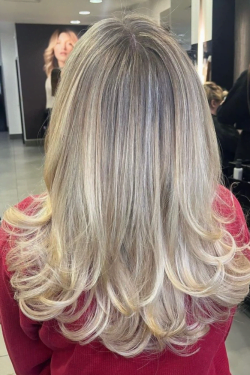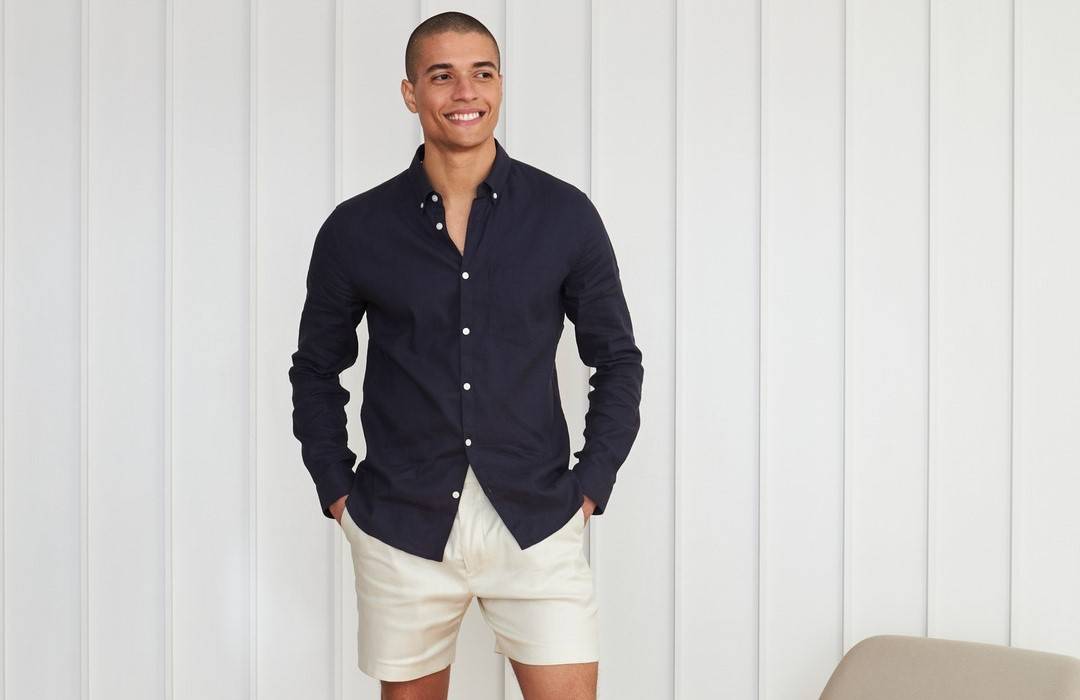Dye job gone wrong? Before you break out the box dye on your hair extensions, pump the brakes! There are some crucial dos and don’ts you need to know first. So, can you dye your hair extensions? It’s a really popular question that we find ourselves being asked time and time again…so we’re here to set the record straight.
There are many reasons why people might want to dye their extensions. Perhaps you’ve had your set for a long time, and the colour needs a bit of a refresh. Or, you’ve dyed your natural hair and want your extensions to match but don’t want to spend the money on a brand-new set.
Whatever the reason, it’s understandable that you’d be tempted to reach for a bottle of hair dye and give it a go. But before you do, there are a few things you need to know.
With over 10 years of experience, the expert stylists at Rush Salon have mastered the technique of properly dyeing hair extensions. Our colour specialists know the ins and outs of working with extensions, from the formulas and techniques to achieving stunning, seamless colour. For this reason, we would always recommend you pop into one of our salons to achieve the best results.
Key Takeaways
- Synthetic or artificial hair extensions should not be dyed as they cannot properly absorb dye and may become damaged.
- Only high-quality human hair extensions made from Remy’s hair can be successfully dyed.
- When dyeing human hair extensions, work in small sections, detangle hair before applying semi-permanent dye from roots to tips, follow exact timing instructions, rinse thoroughly, and deep condition afterwards.
- Dyeing dramatically lifts shade for a long-lasting colour change, while toning subtly enhances tone and lasts 4-6 weeks.
- To maintain the quality of dyed extensions, avoid overprocessing with harsh chemicals like bleach, limit dyeing to only once, and use sulphate-free products for gentle care.
Can You Dye Hair Extensions?
At rush salon, we use high-quality human hair extensions made from Remy hair. But before you dye your extensions, it’s important to understand the difference between human and artificial hair.
Artificial hair extensions are made from synthetic fibres. They are much cheaper than human hair extensions, but have a different texture and do not blend as seamlessly with natural hair. Artificial fibres also cannot be dyed or heat styled without damage.
Human hair extensions are made from real human hair that has been ethically sourced. The best quality human hair extensions are Remy hair, which means the cuticles are kept intact and aligned all in the same direction. This creates a more natural look and makes them easier to style. Human hair can be dyed, heat styled, and treated just like your own hair.
Only human hair extensions can be dyed successfully. However, we do not recommend doing this with box dye at home, instead, visit one of our salons so we can help you achieve the perfect colour. Trying to dye synthetic extensions will only damage them.
What Are The Different Types Of Hair Extensions? *add link to blog once uploaded*
Now that you know whether or not your extensions are dye-able, let’s get into how to properly dye human hair extensions…
Can You Dye Artificial Hair Extensions?
In short, no you can’t. You should not attempt to dye synthetic or artificial hair extensions. The material of synthetic extensions is not able to absorb dye pigments properly. Trying to dye artificial extensions will likely damage the fibres leading them to become dry, brittle, and tangled.
The dye may also simply rinse out and not adhere at all to the synthetic fibres. Some plastic extension fibres can even melt under the chemical processing of dye. Bottom line – dyeing artificial hair extensions is ineffective at best and damaging to the extensions at worst. If you want to change the colour of your artificial extensions, your only option is to purchase a new set in the desired colour.
Can You Dye Human Hair Extensions?
Yes, it is possible to dye human hair extensions, but it should be done carefully by a professional stylist for the best results. Human hair extensions are made from real hair that can absorb and take to dye, similar to the hair on your head. However, the process of colouring extensions is more intricate than dyeing your own hair.
The stylist needs to apply the dye evenly from root to tip and seal the cuticles properly to achieve an even colour without damage.
Going to a hair salon ensures proper products and techniques are used so that your expensive human hair extensions are not inadvertently ruined by an at-home dye job gone wrong.
If you’re considering adding dimension to your hair extensions, you might be wondering about the difference between babylights and highlights. Learn more about these techniques in our comparison of Babylights Vs Highlights.
How to Dye Human Hair Extensions Step by Step
While it’s best to have a professional hair stylist dye hair extensions, especially if you plan to dye your hair at the same time, it is possible to carefully dye extensions at home. Follow these steps:
Step 1: Choose the Right Dye
- It’s important to use a semi-permanent or demi-permanent dye formulated for human hair extensions.
- Permanent dyes can damage the hair.
- Using a demi-permanent dye will provide vivid colour while keeping extensions in good condition.
Step 2: Separate Extensions into Sections
- Separate your hair extensions into smaller sections.
- Dyeing in one big bunch will lead to uneven colour results.
Step 3: Thoroughly Brush and Detangle
- Brush through each section to ensure there are no tangles or knots before applying dye.
- A light spritz of water can help the hair glide through the brush and create a smooth surface for dyeing.
Step 4: Apply Dye Section-by-Section
- Use a tint brush to apply dye to one section at a time, saturating each section completely from root to tip.
- Avoid getting dye on attachment clips or bands.
- Gently rubbing the dye into the hair with your fingers helps penetration.
Step 5: Process the Dye
- Follow exact timing instructions for the dye you are using.
- Lighter shades process faster than darker shades.
- Dry extensions also take colour quicker than wet hair. Most semi-permanent dyes need 20-30 minutes to fully develop.
Step 6: Rinse Thoroughly
- Rinse each section under cool running water, directing the stream downwards to avoid matting. Rinse until water runs clear.
- Give hair a gentle shampoo to remove residual dye. Let dry completely before wearing.
Toning vs Dyeing Hair Extensions
Toning and dyeing hair extensions are similar processes but have some key differences. The colour results from toning are more subtle, like going from brassy blonde to ash blonde. It will not lighten hair the way dyeing does.
Toning involves applying a demi- or semi-permanent hair colour to eliminate brassy or unwanted tones in the hair. Toners are deposit-only colours, meaning they can only deposit new colours without lifting or lightening the existing shade. Toners use low levels of developer and are meant to enhance or alter the hair’s undertones subtly. They last 4-6 weeks and gradually fade away with washing.
Dyeing uses permanent hair colour to completely change the shade of the hair. This lifts the cuticle and deposits new colour into the cortex of the hair for long-lasting results. Dyeing uses developer levels to open the cuticle and achieve permanent, dramatic colour changes like going from brunette to blonde.
For best results when toning or dyeing extensions, have them coloured by a professional stylist. They can assess your hair and choose the proper toner or dye to achieve your desired look. Be sure to properly care for extensions after colouring by washing gently with sulphate-free shampoo.
Tips & Advice from our Experts
When dyeing hair extensions at home, follow these pro tips from our stylists:
- Always detangle extensions thoroughly before applying dye to prevent uneven results.
- Only dye extensions once – multiple dye jobs will damage the quality.
- Avoid getting dye on attachment clips, wefts, or bonds as it can corrode adhesives.
- Use a semi-permanent or demi-permanent dye to prevent damage.
- Process for the minimum time recommended to preserve texture.
- Rinse dye thoroughly until water runs clear.
- Apply a deep conditioning treatment after rinsing out the dye.
For post-dye care, be gentle and use products designed for processed hair. We recommend using a sulphate-free shampoo and conditioner to gently cleanse colour-treated extensions.
Avoid overwashing, brush hair gently, and apply a weekly treatment to restore bonds. With proper techniques and aftercare, your dyed extensions will retain their vibrancy and feel soft, shiny, and beautiful. Our experts are here to help you get stunning results!
Unsure about the best hair color for your skin tone? Discover your perfect match in our guide on What Hair Colour Suits My Skin Colour.
Book Your Hair Appointment Now
Fancy A Change? Find a hairdresser near you or book your hair Extension dye appointment now at Rush
Our salons are experts in all things extensions, work with our stylists to match your natural colour perfectly or transform your style with bright, vibrant hues. Customise the length, volume and colour for a flawless finish every time.
Customer Testimonial:
“I’ve been coming to Rush Sutton for 8 years & am always happy with my colour & cut. The staff are always so welcoming & friendly from the minute I enter the salon. The reception staff can’t do enough to help & my hairdresser Rhianna is just amazing!” – Kay
FAQs
- Can I bleach hair extensions?
Yes, you can bleach human hair extensions but it requires caution. Bleach is very harsh and damaging so only use a professional stylist-grade lightener, follow instructions carefully, and avoid overprocessing. Test the lightener on a small section first to check the results before applying it all over.
- How often can I bleach extensions?
We recommend only bleaching extensions once, any more will severely compromise integrity. Always deep condition after lightening.
- Can you dye permanent extensions while they’re in your hair?
Generally, it’s not recommended to dye permanent hair extensions while they’re installed in your hair. Applying harsh chemical dyes directly to the extensions can corrode or damage the attachments causing shedding and fallout. The safest option is to have your permanent extensions removed before dyeing.
- How do I colour-match my extensions?
We recommend getting colour-matched by one of our stylists. They can expertly match extensions to your natural hair colour and tone.
If colour-matching yourself, we advise using your regrowth area as your roots best reflect your natural colour. Hold extensions beside your roots in natural daylight to compare.




